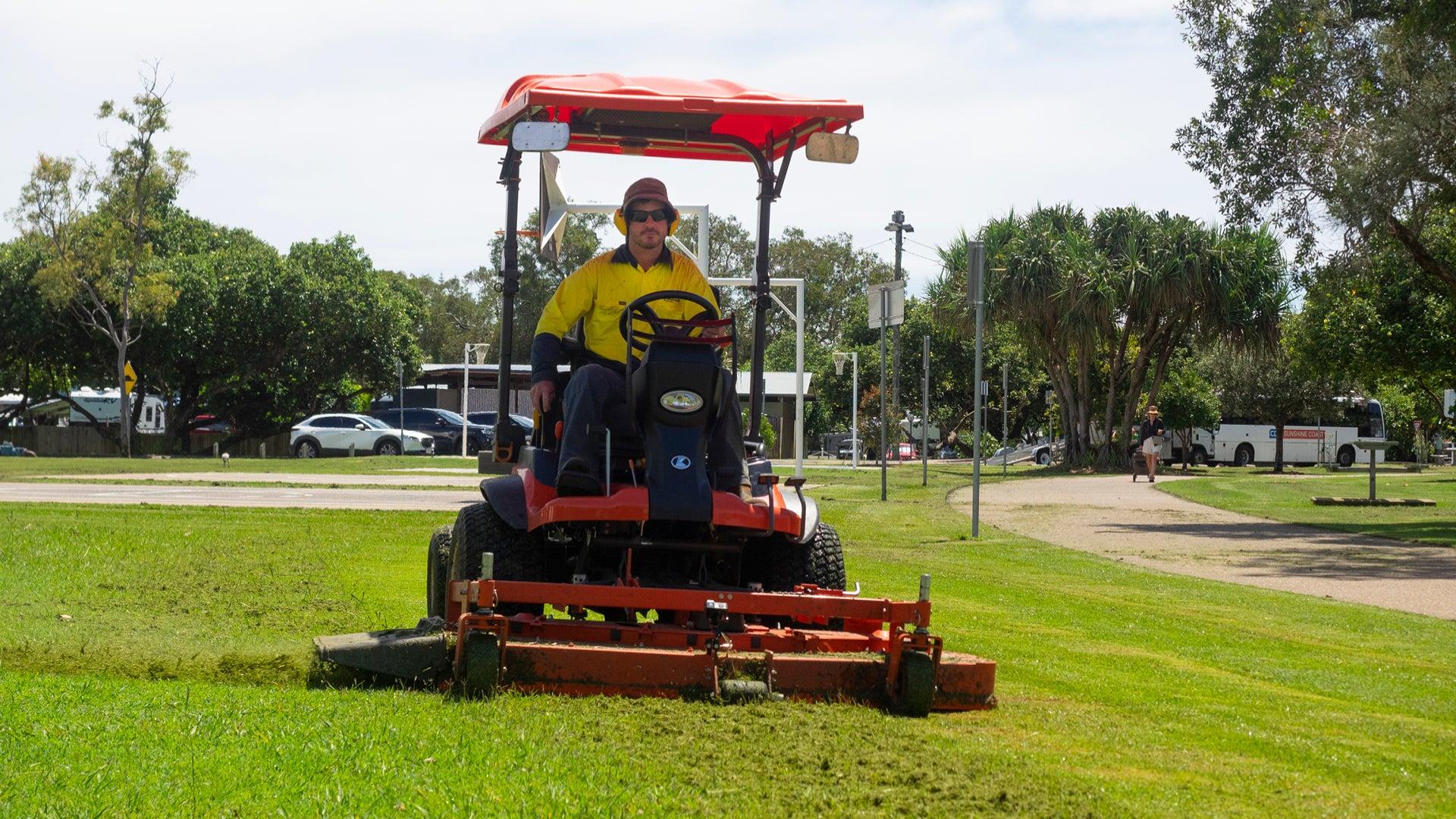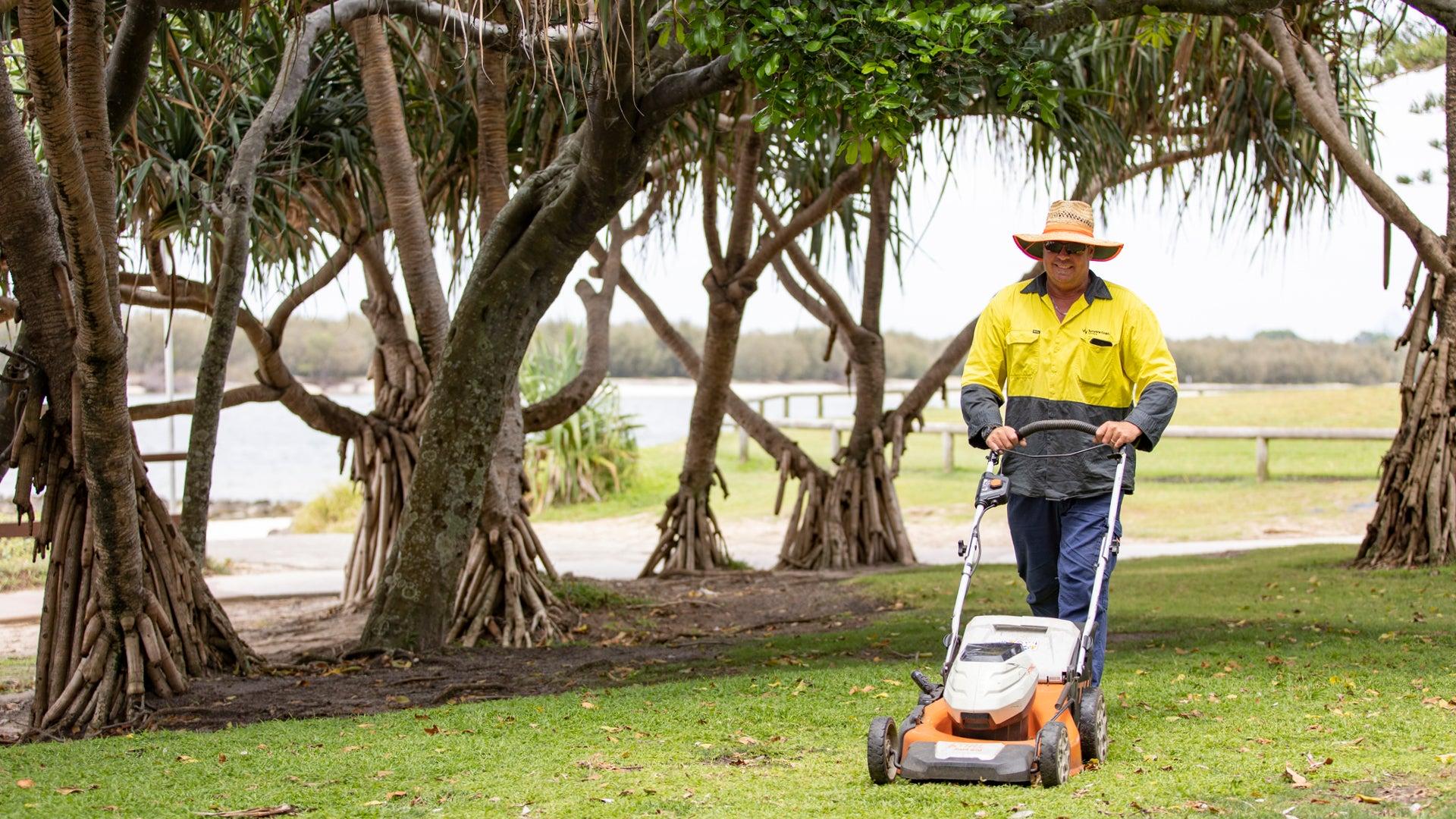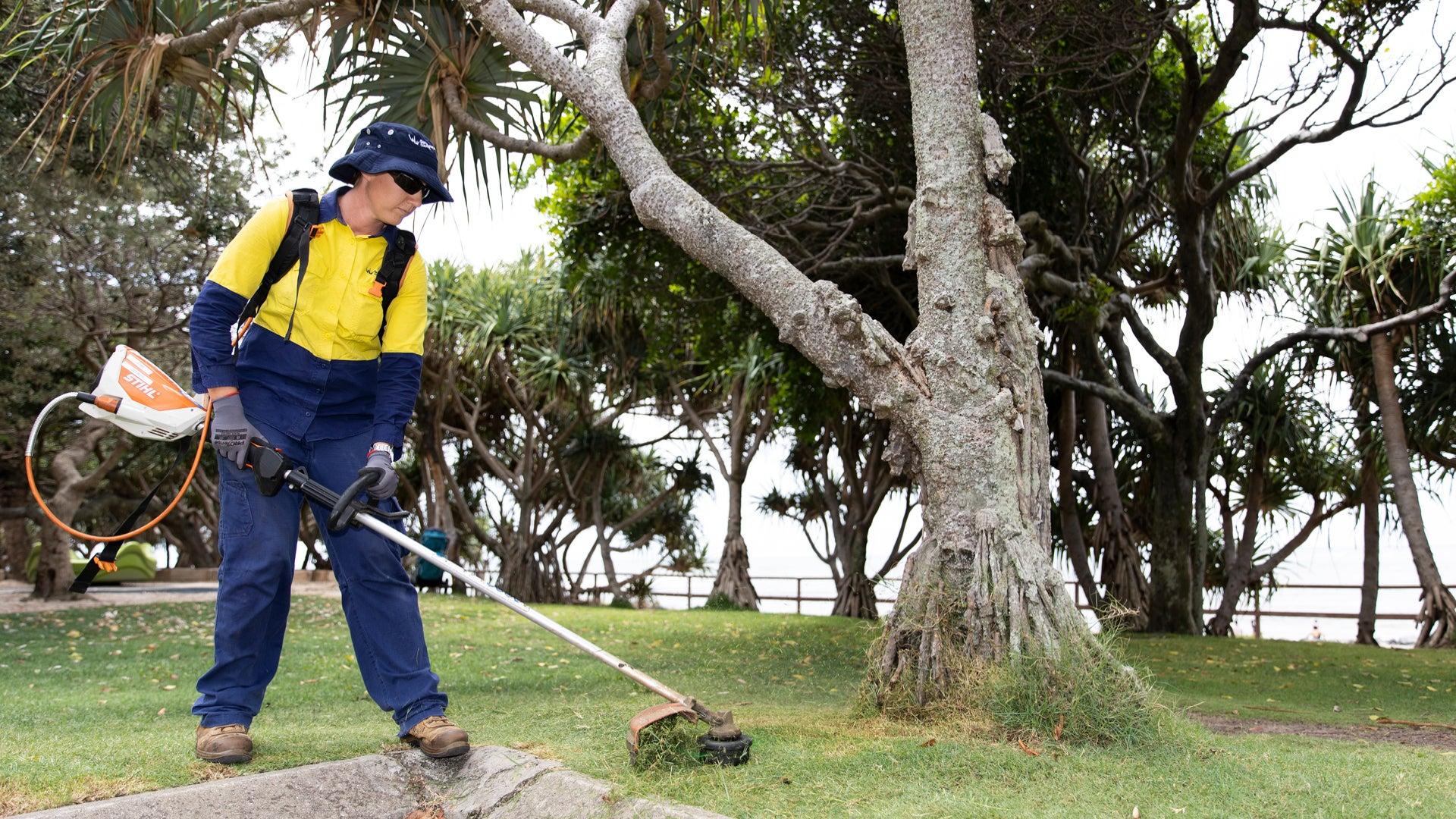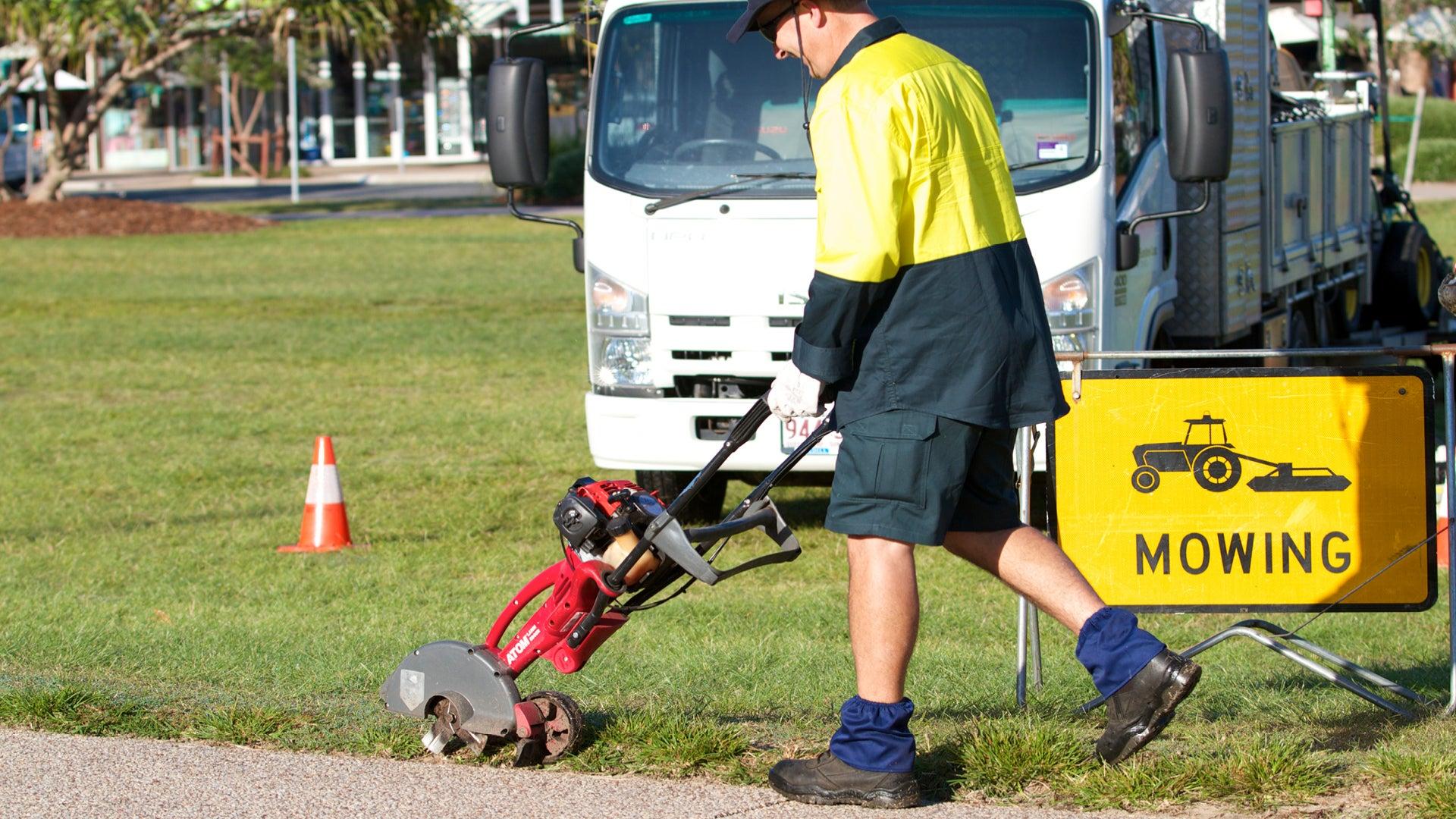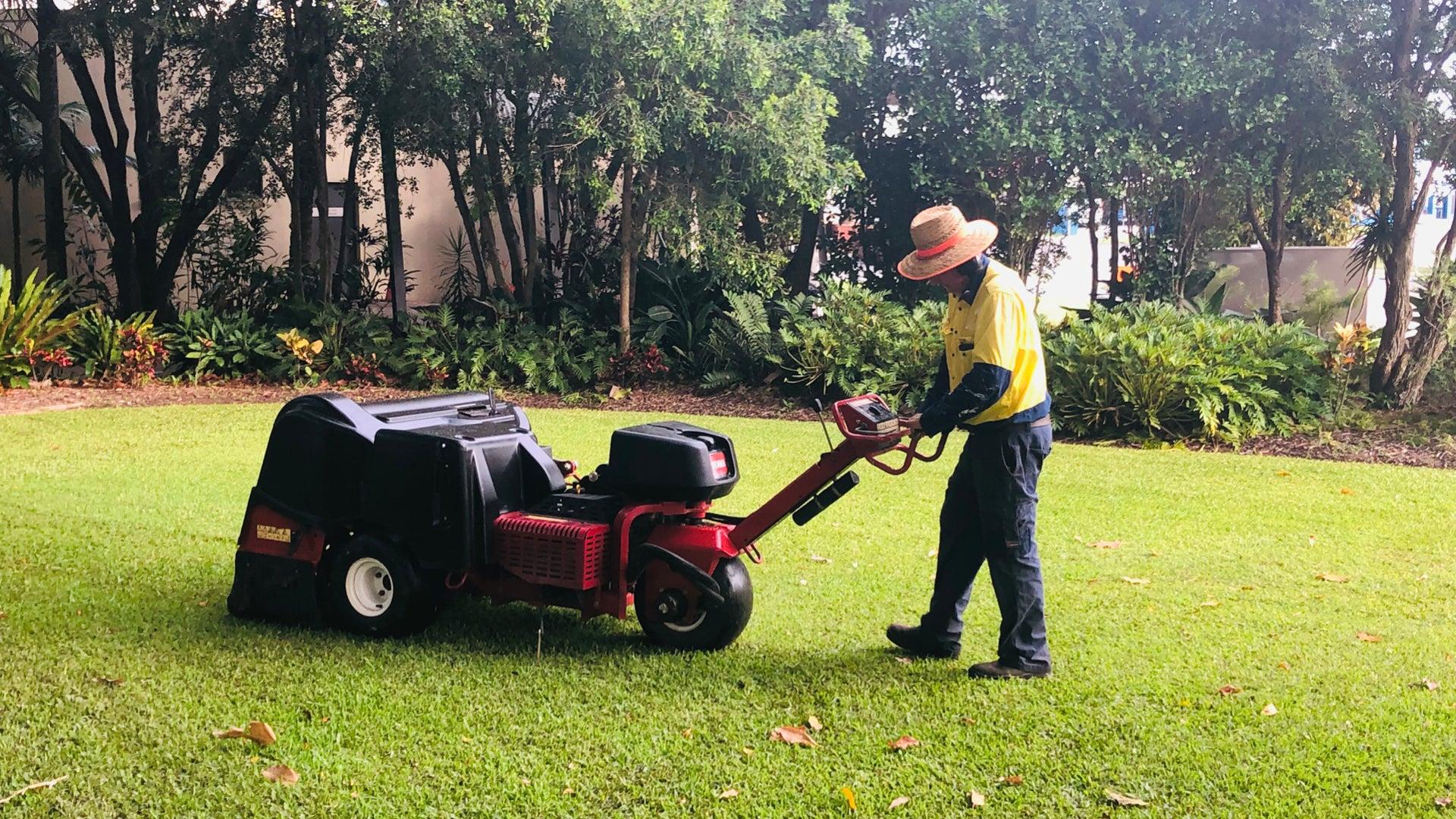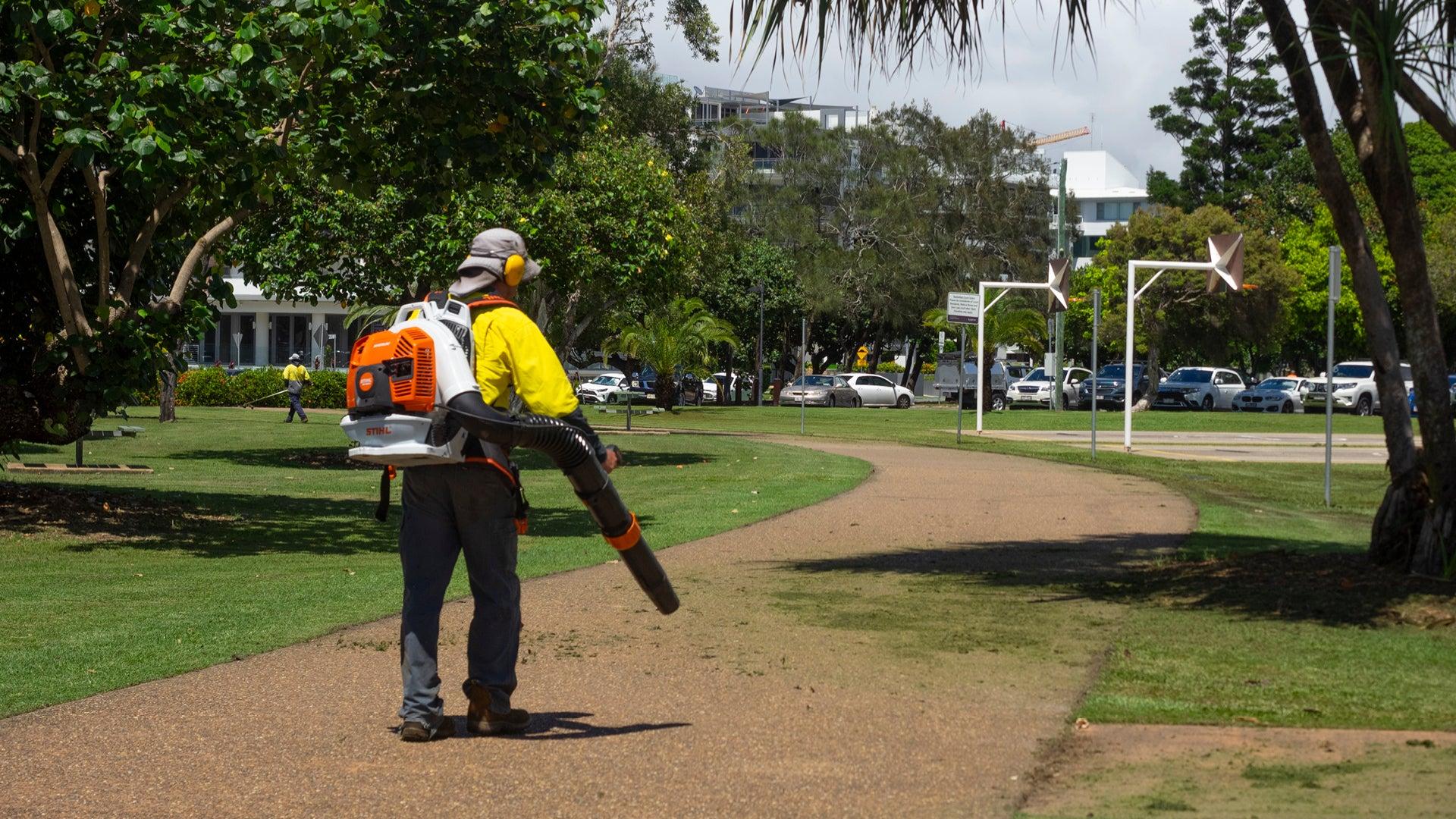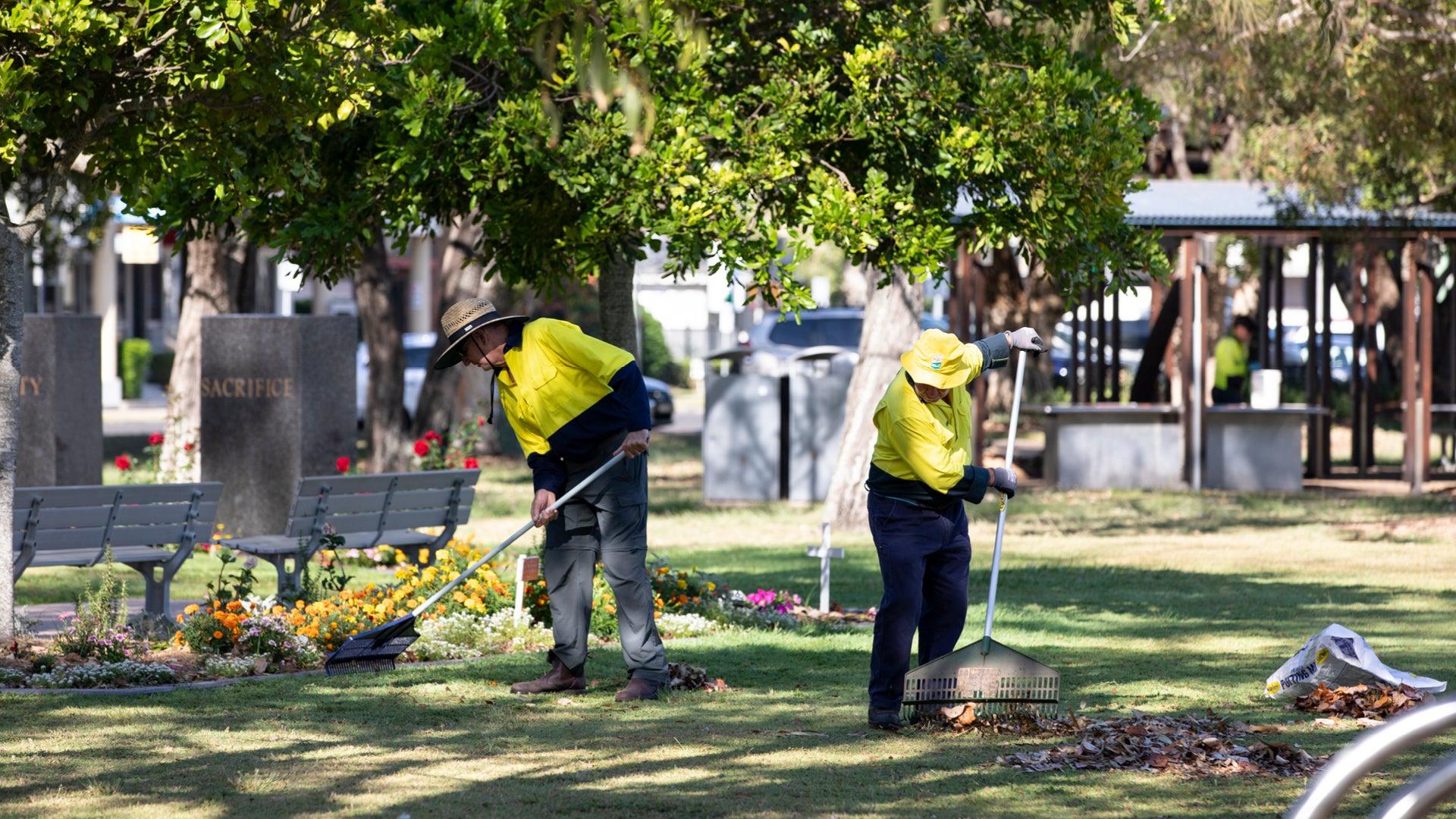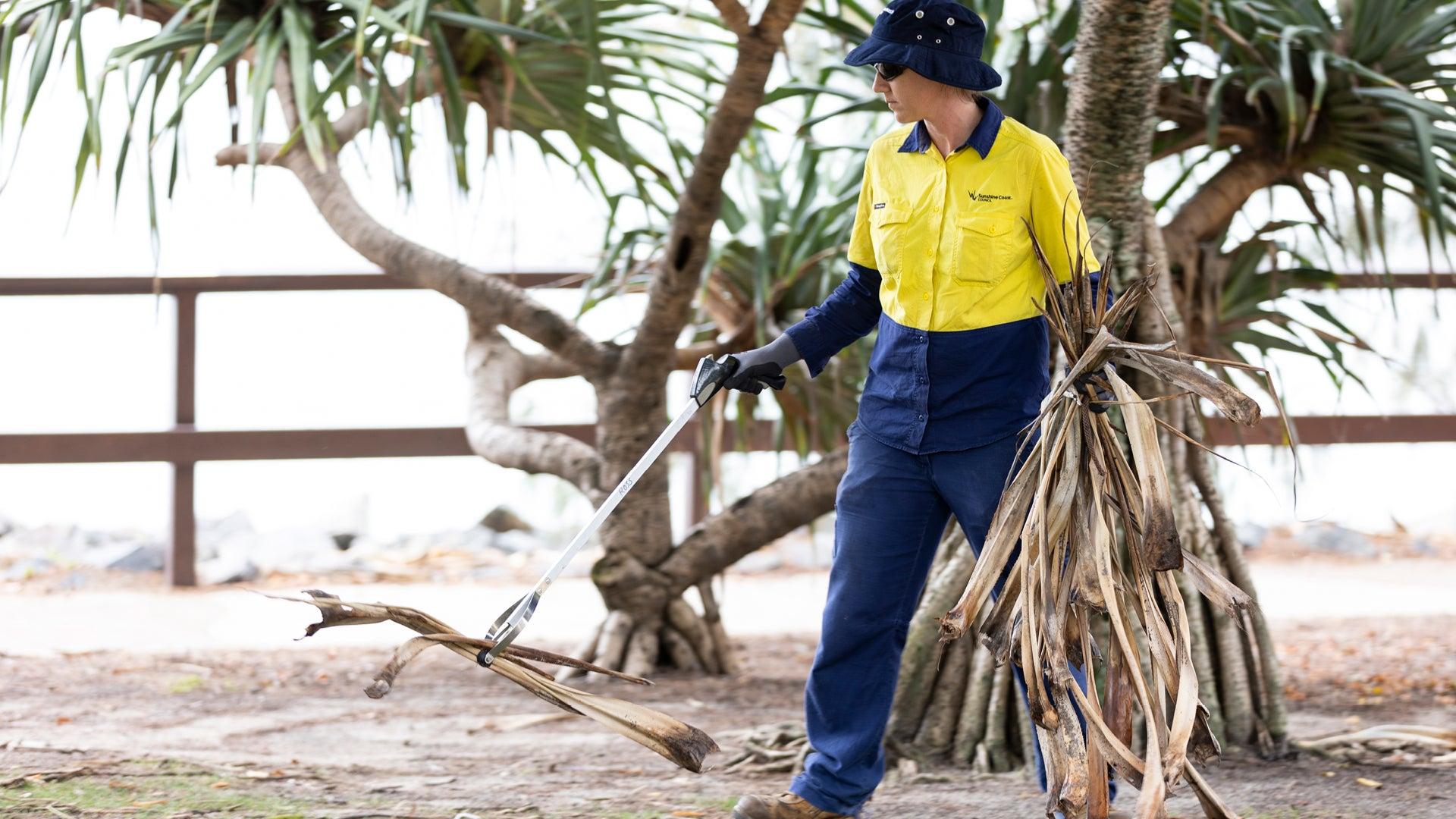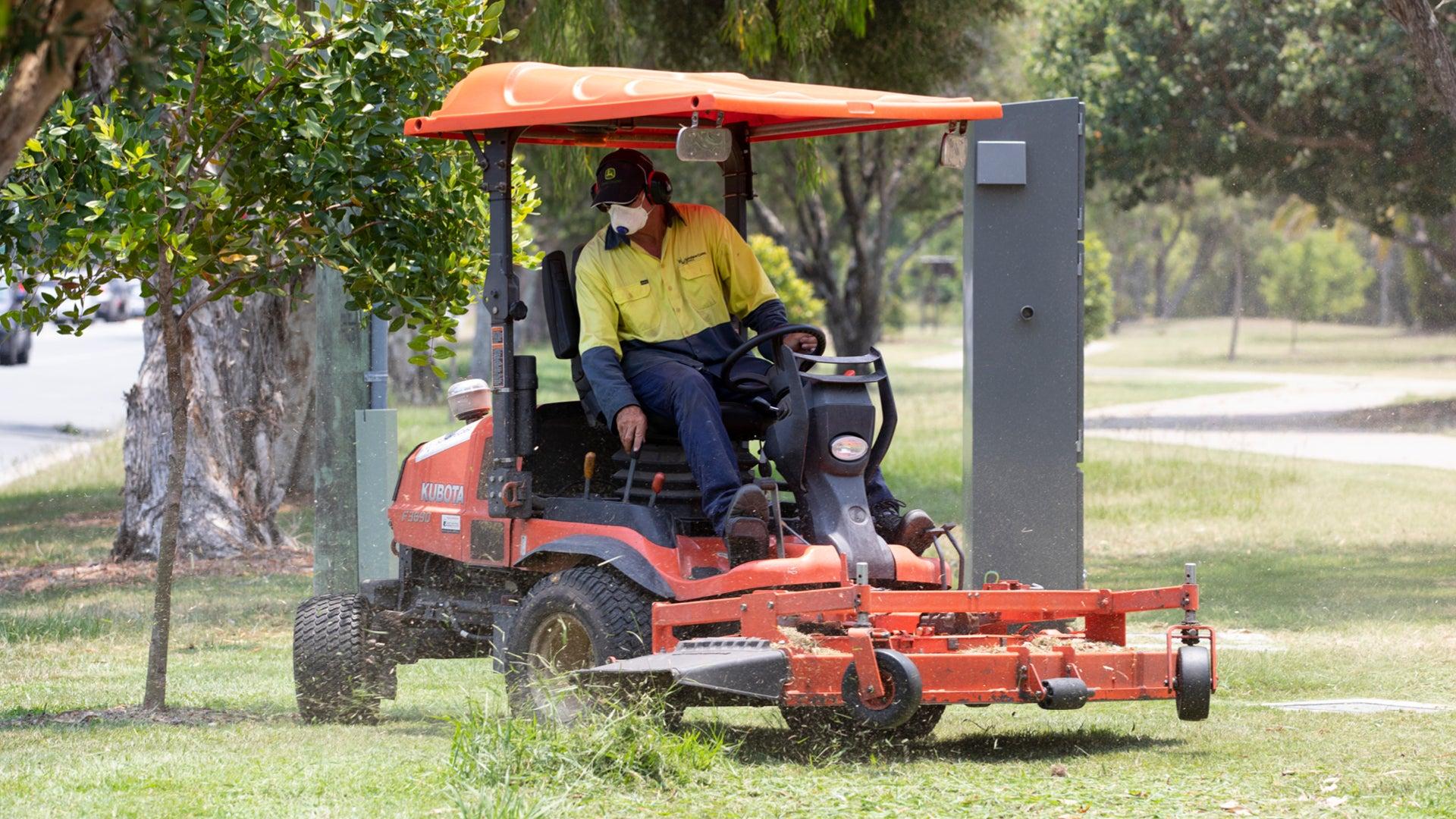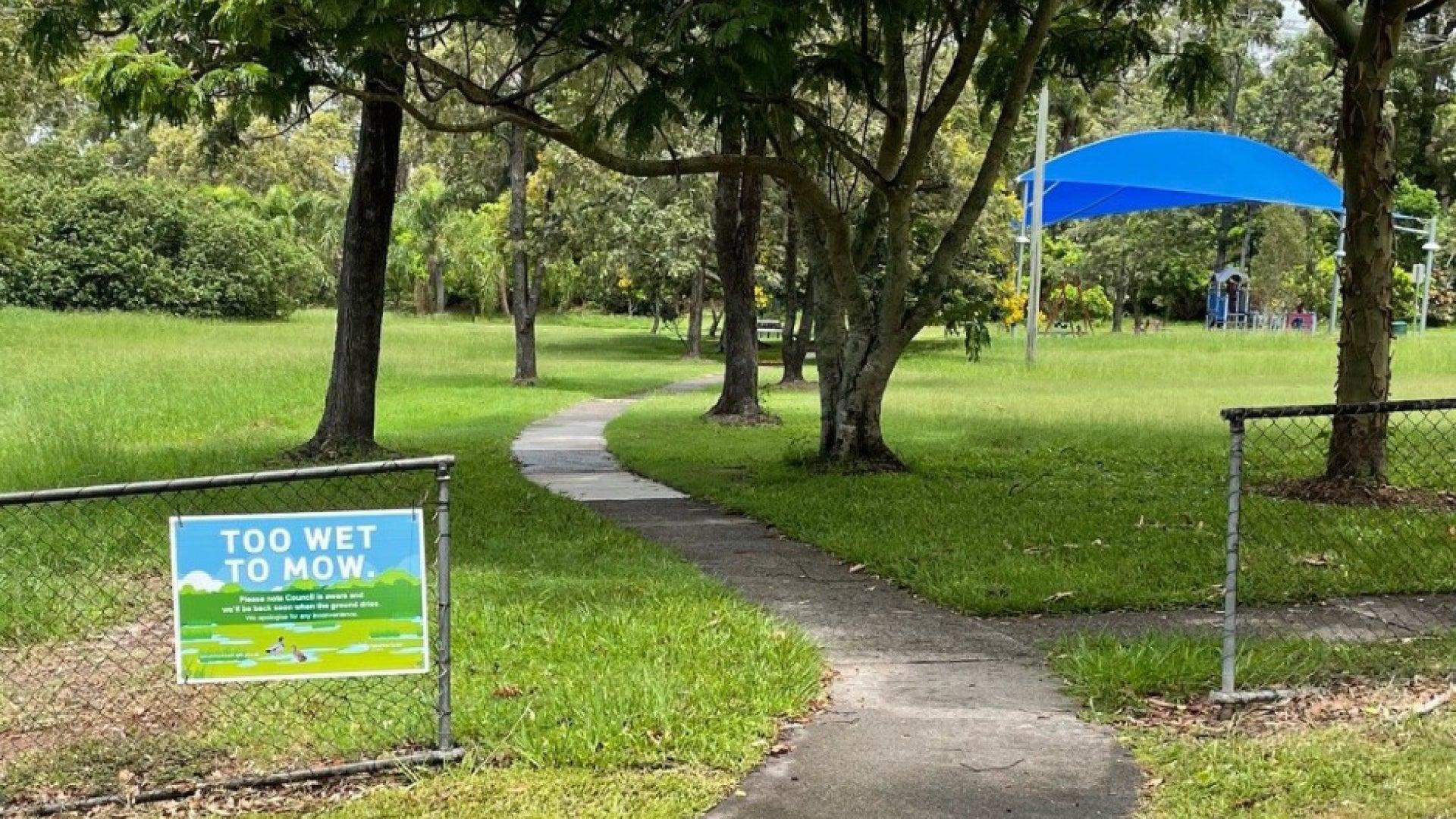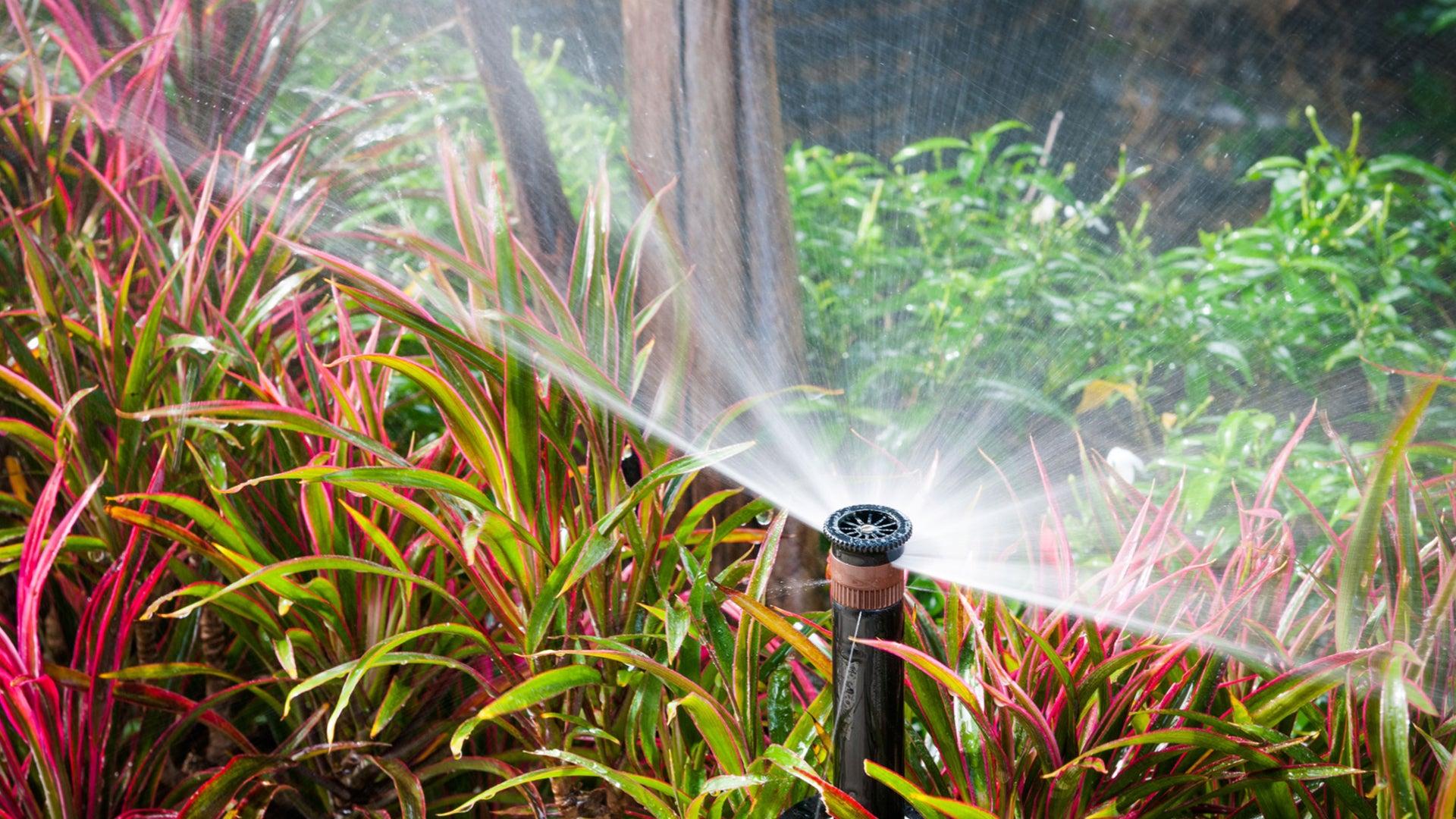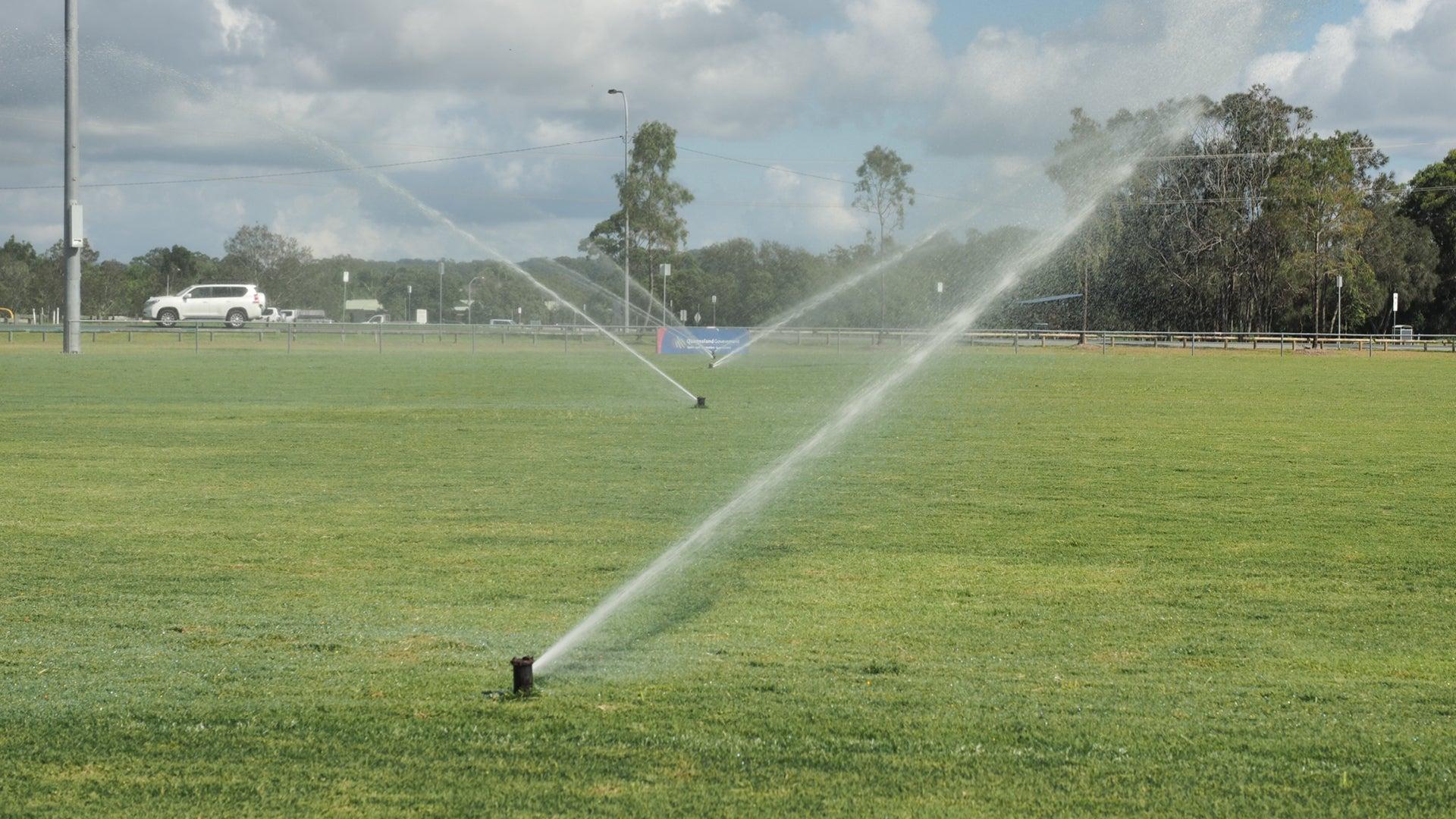Taking care of our parks and gardens
We take pride in the care, management and operation of the region’s public open space and recreational areas. These beautiful green spaces connect people and nature and promote healthy and creative lifestyles.
Sunshine Coast Council looks after around 1,340 parks across the region, including more than 500 recreation parks. We have established these areas for active and passive recreation for our community, and to preserve the landscape features and natural environment of the Sunshine Coast.
Seasonal conditions can impact maintenance and our crews work hard to keep our facilities, parks and open spaces mowed and maintained throughout the year.
This webpage outlines what it takes to keep our green open spaces looking great so they can be enjoyed by our community and visitors.
Mowing our green open spaces
We take pride in our green open spaces. Council uses internal staff and contractors to keep our parks and open spaces safe, accessible and fit for purpose. Our mowing program includes our parks, some road verges, reserves and sports fields.
It is a common and accepted practice that residents, and property and business owners maintain turf and garden areas within the road verge (excluding street trees) surrounding their properties.
Mowing schedules
Mowing schedules
To keep the grass in every maintained park looking great, we follow a mowing (grass-cutting) schedule. These schedules are based on a seasonal frequency. Grass will typically be mowed more frequently during the warmer months (peak season - summer and spring), when a lot of growth occurs and mowed less during the cooler months (off season - autumn and winter) when the grass growth is much slower.
Our high-profile parks (classified as Sunshine Coast Wide and District Parks) attract more visitors and tourists. These parks are typically serviced on a weekly to fortnightly schedule in the peak summer growth period.
Rainfall and damp ground conditions can impact our mowing schedules. While we welcome the rain over the summer period, we also welcome sunny days that help dry out the ground and allow our machinery to access sites so we can mow them.
In periods of significant rainfall, or extended periods of dry weather, these schedules will be amended to suit the local conditions, while ensuring our staff and contractors are working in safe environments and our beloved parks are not damaged in the process.
We do not use catchers on mowers. This means when the grass is mowed, the grass clippings are mulched and left on the ground to decompose, which returns nutrients to the soil and reduces water usage. Additionally, removing and disposing of grass clippings adds to the cost of maintenance.
Dry periods
Dry periods
If there has been no significant rain and conditions become dry, grass may be mowed less frequently for the following reasons:
- The grass will become dormant due to stress. If the grass appears brown and lifeless it will respond once it receives rain again.
- Mowing while the environment is dry, compact and dusty is likely to cause a lot of unpleasant dust, disrupt nearby residents and cause potential health and safety issues.
- Dust patches can form if mowing occurs frequently during dry conditions. Once a dry dirt patch forms, it is difficult for grass to continue to grow.
Unfortunately, during dry conditions weeds and seed heads can grow faster, creating an untidy appearance, while the grass surface remains short.
Our dry season typically coincides with our fire season. If the Queensland Fire Department (QFD) announces a critical fire risk, this will impact the use of any equipment used to maintain our open spaces. In this case, we will delay mowing schedules until the critical fire risk has been removed by the QFD.
As soon as site conditions improve, our resources will return to the mowing schedule.
Wet periods
Wet periods
If there has been significant rainfall, it becomes challenging to safely mow our open spaces. If our summers are wet, these periods are usually accompanied with lightning events, as well as hot and humid temperatures.
This combination of weather typically results in the grass growing at faster rates than normal. In some instances, the grass can grow so quickly that only a few days after mowing, it can appear to be untidy and give the appearance that it has not been mown. This creates extremely challenging conditions for our staff and contractors to keep our open spaces continually tidy and fit for use.
If you notice a greenspace in your local area that is overgrown, chances are it is due to recent or current wet weather conditions. We must wait for the ground to dry before it can be mowed again. If our mowing teams starts too early, the following is likely to occur:
- The machine used to mow the grass is heavy and the weight of the machine (>750kg) will likely create ruts and damage the park surface.
- If the grass is too wet, it does not cut well and may not disperse.
- We may be at risk of our staff and contractors placing themselves in unsafe conditions.
Please be reassured that Council is aware these parks need mowing. They are on a schedule which we regularly monitor. As soon as sites are dry enough to mow, we will return to the scheduled mowing.
In some cases the operators servicing the parks will mow the parts that are dry enough and leave the sections that are too wet. This may result in the sites that have not been mown to become very long over a period. Unfortunately, there is little we can do when sites are inundated with water and cannot be accessed.
In these situations, we will place signs up to keep our community informed.
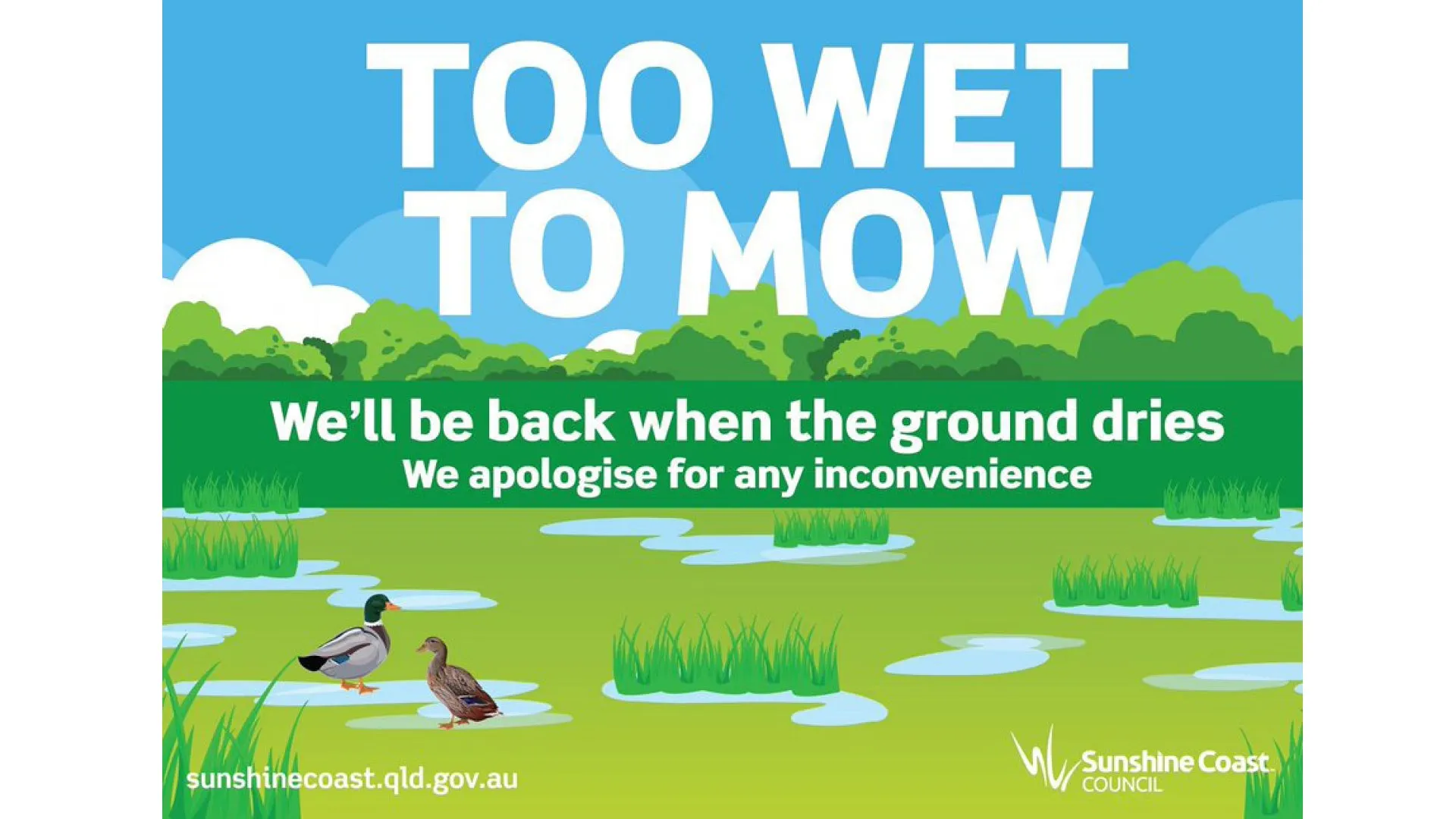
Maintenance requests and acknowledgement
Maintenance requests and acknowledgement
If you notice a park or green space in your local area that is overgrown or needs attention, it is most likely caused by recent or current weather conditions. Please be patient and be assured that providing free, green, active and accessible open spaces is at the forefront of what we do.
When requests for mowing are made, we will continue to prioritise our mowing schedule as required.
Thank you for your understanding and patience, knowing that Council officers are continuing to work through our schedule as programmed.
To make a request, contact Council.
Interesting facts
Interesting facts
- Sunshine Coast Council maintains more than 933 hectares of grass across our region.
- Every mowing cycle we undertake is equivalent to around 933 NRL fields.
- During the peak season (typically November to April), we will mow more than 3,512 sites about every two weeks. Some high use areas will be maintained more frequently.
- During the dormant season (May to October) we mow every three to six weeks. For the month of July, limited mowing typically occurs due to minimal grass growth.
- Our mowing equipment ranges from:
- small ride-on mowers
- commercial grade ride-on mowers
- remote controlled mowers for sites with slopes and other sites that may be difficult for traditional commercial mowers.
- We use commercially safe and compliant contractors sourced through an open tender process. If you would like more information or wish to be included in future tender invitations, please register via the Qtender website.
Watering our parks and gardens
We take pride in keeping our parks and gardens beautiful. We plant species that encourage native fauna and flora while providing a great amenity for our community and visitors to enjoy. We value greenery and shade.
Interesting facts and figures
Interesting facts and figures
- Sunshine Coast Council mows and landscapes more than 23,000 hectares each year.
- Each year we mulch and compost approximately 5,500m3 from collected green waste.
- In 2024 we planted 3,251 street trees across the region.
- More than 80 per cent of our turf maintenance is delivered through contractors.
- 34 per cent of Council’s maintenance machinery servicing our parks and gardens is electric.
- We supply free trees each year for our ratepayers. Find out how to obtain a free tree on Council’s website.
Watering our parks using irrigation
Watering our parks using irrigation
In 2018 Sunshine Coast Council approved installing a Hydrawise Smart Irrigation system at several parks and streetscapes across our region. Sunshine Coast Council was the first council in Australia to procure and implement a cloud-based smart irrigation system. Over time, our aim is to ensure all irrigated sites are being managed through Smart Irrigation technology on a single platform saving time, resources and reducing costs.
Smart irrigation plays an important role in the environmental health, sustainability and visual appeal of parks and open spaces. One of the greatest advantages of a smart irrigation system is its ability to save water. We make significant savings each year due to our smart irrigation system.
Clean and green electric tools
Sunshine Coast Council aims to electrify operations (where it is appropriate and most effective to do so) and reduce our carbon footprint where it can be achieved. This is an innovative approach towards reducing our emissions and striving for a low carbon community.
At this stage, electric mowers are not as efficient for cutting in heavy growth conditions and this drains the batteries quickly, reducing time efficiency. The use of such technology is preferred within high-profile parks that are mown weekly to fortnightly, year-round.
These electric mowers are developed with high efficiency lithium batteries. Our green mowers are charged on electricity generated by the Sunshine Coast Council-owned and established 15-megawatt solar farm – the first of its kind of any local government in Australia. This process creates a circular energy exchange producing zero emissions.
Get involved
Community gardens
Community gardens
There are 12 community gardens across our region. Community gardens are a great way to meet people, share gardening skills and grow your own food. Get involved!
Parks and Gardens Community Volunteer Program
Parks and Gardens Community Volunteer Program
The volunteer program offers all residents and their family and friends the opportunity to become a steward of local parks in your neighbourhood, including our community gardens. Volunteer activities may include (but are not limited to):
- Revegetation works
- litter collection
- general cleaning
- gardening duties
- mowing and
- edging works.
For more information, visit the Parks and gardens community volunteer program website.
High School Work Experience and Career Program
High School Work Experience and Career Program
If you are a student in high school and you love the outdoors and have a keen interest in caring for trees, parks and gardens, why not apply for Council’s five-day work experience program? The program is open to students in Years 9, 10, 11 and 12 looking to obtain on-the-job skills and experience in a parks and gardens operational environment. The program incorporates six key career fields, including:
- horticulture
- arboriculture
- turf and irrigation
- nursery operations
- infrastructure maintenance
- administration.
As well as developing technical skills, transferable skills such as communication, teamwork and an understanding how the Parks and Gardens Branch operates will be demonstrated within the week. Students will also receive a certificate of completion at the end of the five day program.
For more information check out the Work Experience and Career Program video, or visit the careers page on Council’s website to apply. Download the brochure.
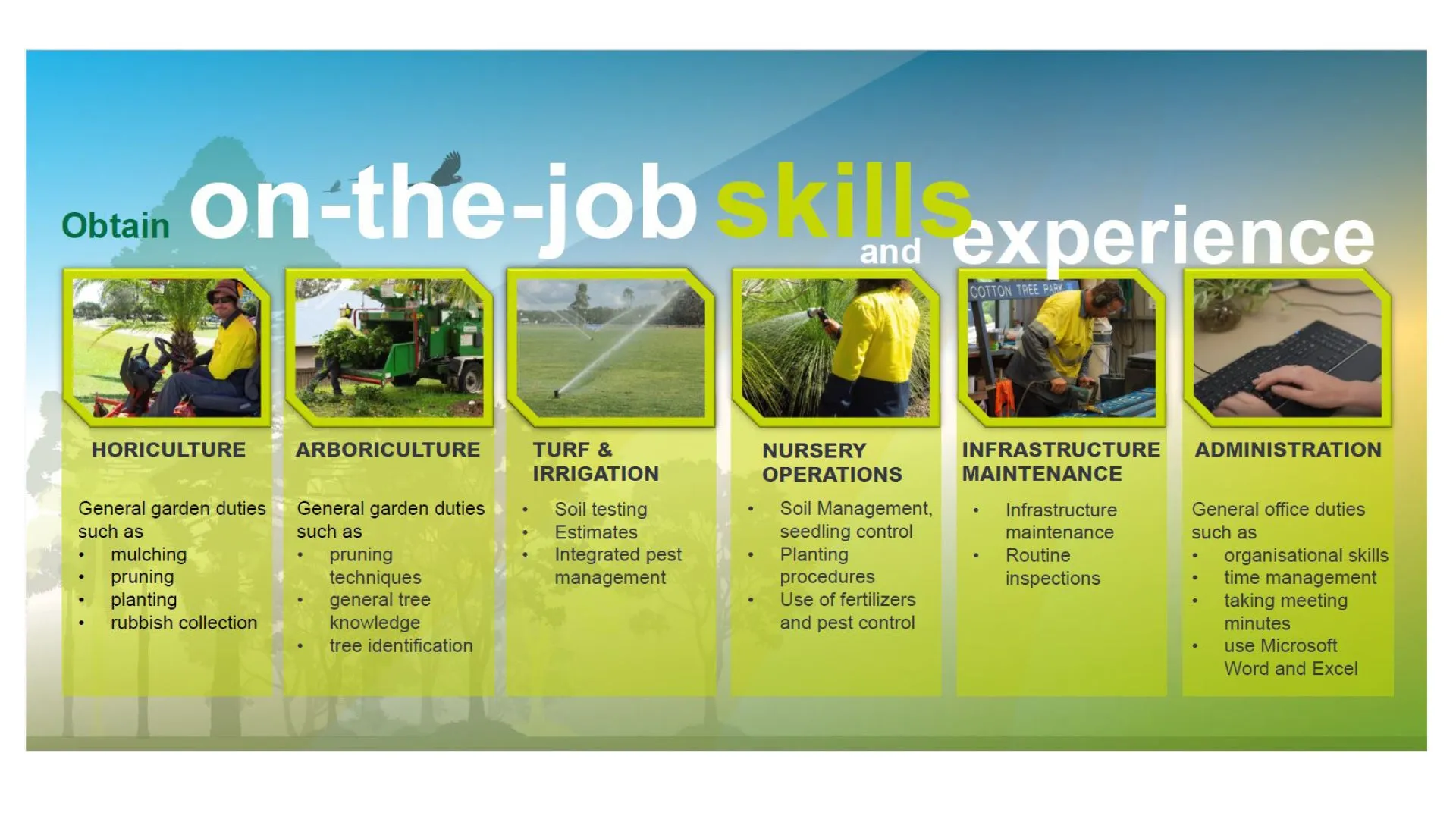
Current vacancies
Current vacancies
Check out our current job vacancies on Council’s website. If you’re looking for a great workplace with an amazing lifestyle, where our community-focused workforce thrives in a vibrant, fast-growing region, please consider a career with Sunshine Coast Council today.
Why are there sometimes delays in mowing parks and open spaces?
Why are there sometimes delays in mowing parks and open spaces?
Delays can occur after periods of rain when the ground is saturated. Mowing wet grass can damage the soil and the grass itself. To maintain the health of the grass and prevent long-term damage, our operators are instructed to minimise the impact of mowing equipment by assessing the conditions prior to mowing. This may result in delays to mowing the park.
What causes wheel ruts in parks and open spaces?
What causes wheel ruts in parks and open spaces?
The weight of commercial mowers (>750kg) can cause wheel ruts and damage to our parks, especially in wet conditions. To prevent this type of damage, mowing operators will not mow the grass when it is too wet. Should this type of damage inadvertently occur, the responsible team will be required to repair the damage.
It hasn’t rained for a couple of days now, so why hasn’t anyone come back to mow?
It hasn’t rained for a couple of days now, so why hasn’t anyone come back to mow?
Parks can stay wet for days or even weeks. The weight of commercial mowers can still cause wheel ruts and damage to our parks despite the surface appearing to be dry under foot. In addition to this, our schedules become very backed up after periods of rain and we work to ensure the missed areas are maintained in a timely manner, without neglecting the parks that are due for their scheduled service. Staff and contractors will endeavour to return to site as soon as they can and is safe to do so.
Why are grass clippings left on the ground after mowing?
Why are grass clippings left on the ground after mowing?
Why are grass clippings left on the ground after mowing?
Grass clippings are mulched and left on the ground to decompose, which returns nutrients to the soil and reduces water usage. Additionally, removing and disposing of grass clippings adds to the cost of maintenance which would result in the loss of valuable services elsewhere. During accelerated growth periods there may be excessive grass clippings left after mowing.
Why don’t you spray out weeds within parks?
Why don’t you spray out weeds within parks?
In many cases, overuse of herbicides and reliance can result in more weed infestations and harm the environment, therefore reducing herbicide usage is our aim. Instead of relying on herbicides, we take other preventative actions such as consistent mowing scheduling during the peak growth period.
Why does the park up the road get mown more often than this one?
Why does the park up the road get mown more often than this one?
The cutting frequency for each location has been determined based on the Desired Standard of Service endorsed by Council which is supported by the Environment and Liveability Strategy. Each site and open space area is classified by its role and function. As an example, a Council-wide Sport or Precinct site which is continually used is to be serviced more regularly than a Streetscape, which may be used every now and again.
Why don’t they mow the parks around this area at the same time?
Why don’t they mow the parks around this area at the same time?
Different teams on occasion are responsible for mowing specific locations. Some sites are managed by contractors, some by road network crews and others by our internal parks and gardens staff. Each crew has specific skills, safety requirements, machinery and tools that meet the specific requirements of each site.
Why does the house up the road get their verge mown by Council but mine doesn’t?
Why does the house up the road get their verge mown by Council but mine doesn’t?
Road verges typically contain turf and/or gardens where the resident or property owner maintain all road verge areas surrounding their property. Council may commit to maintaining a road verge when there is a safety risk to the resident in carrying out maintenance, such as a very steep verge or road verges abutting the rear of properties where there is no immediate access. Council manages biopods and raingardens along with public reserves, median strips and road edges, and Central Business Districts areas.

